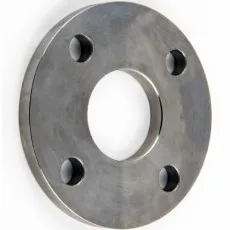-
Cangzhou Yulong Steel Co., Ltd.
-
Phone:
+86 13303177267 -
Email:
admin@ylsteelfittings.com
- English
- Arabic
- Italian
- Spanish
- Portuguese
- German
- kazakh
- Persian
- Greek
- French
- Russian
- Polish
- Thai
- Indonesian
- Vietnamese
- Zulu
- Korean
- Uzbek
- Hindi
- Serbian
- Malay
- Ukrainian
- Gujarati
- Haitian Creole
- hausa
- hawaiian
- Hebrew
- Miao
- Hungarian
- Icelandic
- igbo
- irish
- Japanese
- Javanese
- Kannada
- Khmer
- Rwandese
- Afrikaans
- Albanian
- Amharic
- Armenian
- Azerbaijani
- Basque
- Belarusian
- Bengali
- Bosnian
- Bulgarian
- Catalan
- Cebuano
- China
- China (Taiwan)
- Corsican
- Croatian
- Czech
- Danish
- Esperanto
- Estonian
- Finnish
- Frisian
- Galician
- Georgian
- Kurdish
- Kyrgyz
- Lao
- Latin
- Latvian
- Lithuanian
- Luxembourgish
- Macedonian
- Malgashi
- Malayalam
- Maltese
- Maori
- Marathi
- Mongolian
- Myanmar
- Nepali
- Norwegian
- Norwegian
- Occitan
- Pashto
- Dutch
- Punjabi
- Romanian
- Samoan
- Scottish Gaelic
- Sesotho
- Shona
- Sindhi
- Sinhala
- Slovak
- Slovenian
- Somali
- Sundanese
- Swahili
- Swedish
- Tagalog
- Tajik
- Tamil
- Tatar
- Telugu
- Turkish
- Turkmen
- Urdu
- Uighur
- Welsh
- Bantu
- Yiddish
- Yoruba

Sep . 04, 2024 12:41 Back to list
slip on flange class 150
Understanding Slip-On Flange Class 150
Slip-on flanges are a popular choice in various piping systems, due to their ease of installation and versatility. Class 150 refers to the pressure rating of these flanges, indicating their ability to handle specific pressure levels as defined by the American National Standards Institute (ANSI). In this article, we will explore the characteristics, applications, and benefits of class 150 slip-on flanges.
Characteristics of Slip-On Flanges
Slip-on flanges are designed to slide over the end of a pipe and then get welded in place. This design feature allows for easy alignment and installation, making them a preferred option for many engineers and pipefitting professionals. Class 150 flanges typically have a pressure rating of 150 psi at a temperature of 100°F, with pressure ratings decreasing as temperatures increase. The material of these flanges usually includes carbon steel, stainless steel, or other alloys, which contribute to their durability and resistance to corrosion.
The dimensions and specifications of class 150 slip-on flanges adhere to the ANSI/ASME B16.5 standard. This standard outlines the sizes, materials, and pressure-temperature ratings for flanges used in a wide variety of applications. Slip-on flanges come in several different sizes, allowing for compatibility with various pipe diameters.
Applications of Class 150 Slip-On Flanges
slip on flange class 150

Due to their adaptability and robust design, class 150 slip-on flanges are commonly used in various industries, including oil and gas, chemical processing, power generation, and water treatment. They are particularly useful in non-critical applications or in situations where the pressure is relatively low. These flanges can be used in both high-temperature and moderately corrosive environments, making them fitting for a range of industrial applications.
In the oil and gas sector, for instance, slip-on flanges facilitate the connection of pipes and other equipment, allowing for seamless integration into existing systems. In chemical processing plants, their ability to withstand diverse chemical environments makes them an invaluable component of piping systems.
Benefits of Using Class 150 Slip-On Flanges
One of the primary benefits of class 150 slip-on flanges is their ease of installation. The slip-on design requires less precise alignment of pipes compared to other flange types, such as blind flanges or weld neck flanges, which can significantly reduce installation time and labor costs. Additionally, if future maintenance or adjustments are necessary, the ability to slide the flange off the pipe without much effort can be a considerable advantage.
Another key benefit is the strength of the weld joint created when the flange is welded in place. This offers a tight seal that can effectively withstand pressure changes within the system, thereby enhancing the overall integrity of the piping installation.
In conclusion, class 150 slip-on flanges offer a practical and efficient solution for various piping applications. Their design, ease of installation, and adaptability to different environments make them a popular choice across numerous industries. Understanding the functionality and benefits of these flanges is essential for anyone involved in pipefitting or system design, ensuring that the right components are chosen for the job.
Latest news
-
ANSI 150P SS304 SO FLANGE
NewsFeb.14,2025
-
ASTM A333GR6 STEEL PIPE
NewsJan.20,2025
-
ANSI B16.5 WELDING NECK FLANGE
NewsJan.15,2026
-
ANSI B16.5 SLIP-ON FLANGE
NewsApr.19,2024
-
SABS 1123 FLANGE
NewsJan.15,2025
-
DIN86044 PLATE FLANGE
NewsApr.19,2024
-
DIN2527 BLIND FLANGE
NewsApr.12,2024
-
JIS B2311 Butt-Welding Fittings LR/SR 45°/90° /180°Seamless/Weld
NewsApr.23,2024











